This is not a sound bite about how to reduce anxiety. This is not a short course in turning sadness into joy. This is not a psychotherapeutic technique to counter despair. This is not a call to action or even a prayer, as those are usually understood.
What you will find here is a practice. A practice, by definition, is the exercise of an activity, repeated to acquire or maintain a proficiency in that activity. A spiritual practice is the thing you do for 20 minutes or so a day in hopes that the sense of connection and capacity found in the experience accompanies you during the other 23 hours and 40 minutes of the day.
You may unsubscribe from any of our newsletters at any time.
This is a practice using our grief and heartbreak as a path into a quiet heart and loving action. It’s also an invitation into joy.
***
As the forest fires burned a few kilometres away last summer, as around the world dams broke, wars escalated and political rhetoric sharpened, I struggled to find a quiet heart. My practice — reading, scripture, meditation, prayer — was hard to maintain. Yet I knew that if I continued to show up, practice would serve as a trail through the dark woods of despair, leading me to the space where I could remember that I am rooted in Christ. I needed that trail every day, because my serenity got blown to pieces every day.
For months, I had been working my way through Merlin Sheldrake’s masterpiece, Entangled Life, about the science of fungi. I read a few paragraphs each morning and pondered them in light of my faith. Early one smoky August day, I finally reached the epilogue, which began with a portion of a short prayer from St. Francis of Assisi. “Our hands imbibe like roots,” it read, “So I place them on what is beautiful in this world.”
My heart quickened. I looked up the footnote, tore through my bookcases, found Daniel Ladinsky’s Love Poems from God, read the last two lines of his beautiful interpretation of this prayer. “And I fold them in prayer, and they draw from the heavens light.”
I sat back, feeling like I had been given the complete contemplative manifesto for this climate of catastrophe: a template for working with grief, an outline of how to act. So I start this essay with gratitude. Thank you, Francis of Assisi. Thank you, Daniel Ladinsky. Thank you, Merlin Sheldrake.
And then I turn to the prayer, to the practice.
***
Our hands imbibe like roots.
First, I notice the words. Francis starts with the collective: “Our hands.” Like “Our Father,” the first-person plural in this short prayer reminds us of our communal experience. Francis is discussing the universal human reality that we have been created to be in relationship with each other and with the world around us. More than relationship, really: we are created to drink each other in. We are intended to knit together with each other.
It’s a lovely thing, this embrace of our incarnational selves. We aren’t the masters, above and better than all else; nor are we the parasites who deserve to die. We are simply and beautifully part of the whole.
I take that in: I am a beloved, entangled being, part of a web of beloved, entangled beings.
“Our hands imbibe like roots.” This intoxicating line evokes the way that tree roots symbiotically entwine with mycorrhizal fungi, to transport nutrients and information between trees. At times, the roots and the fungi are so tightly woven together as to be indistinguishable, with fungi actually residing within the body of the root. The health of the trees and the health of the fungi depend on this relation- ship with each other.
Then I realize that it’s not just roots that imbibe. When I breathe out, the spruce tree outside my window inhales that breath. When that spruce exhales oxygen, I breathe it in. This remarkable cycle of breath sustains both of us; the health of the tree and my health depend on this relationship. This remarkable cycle of breath sustains all living creatures.
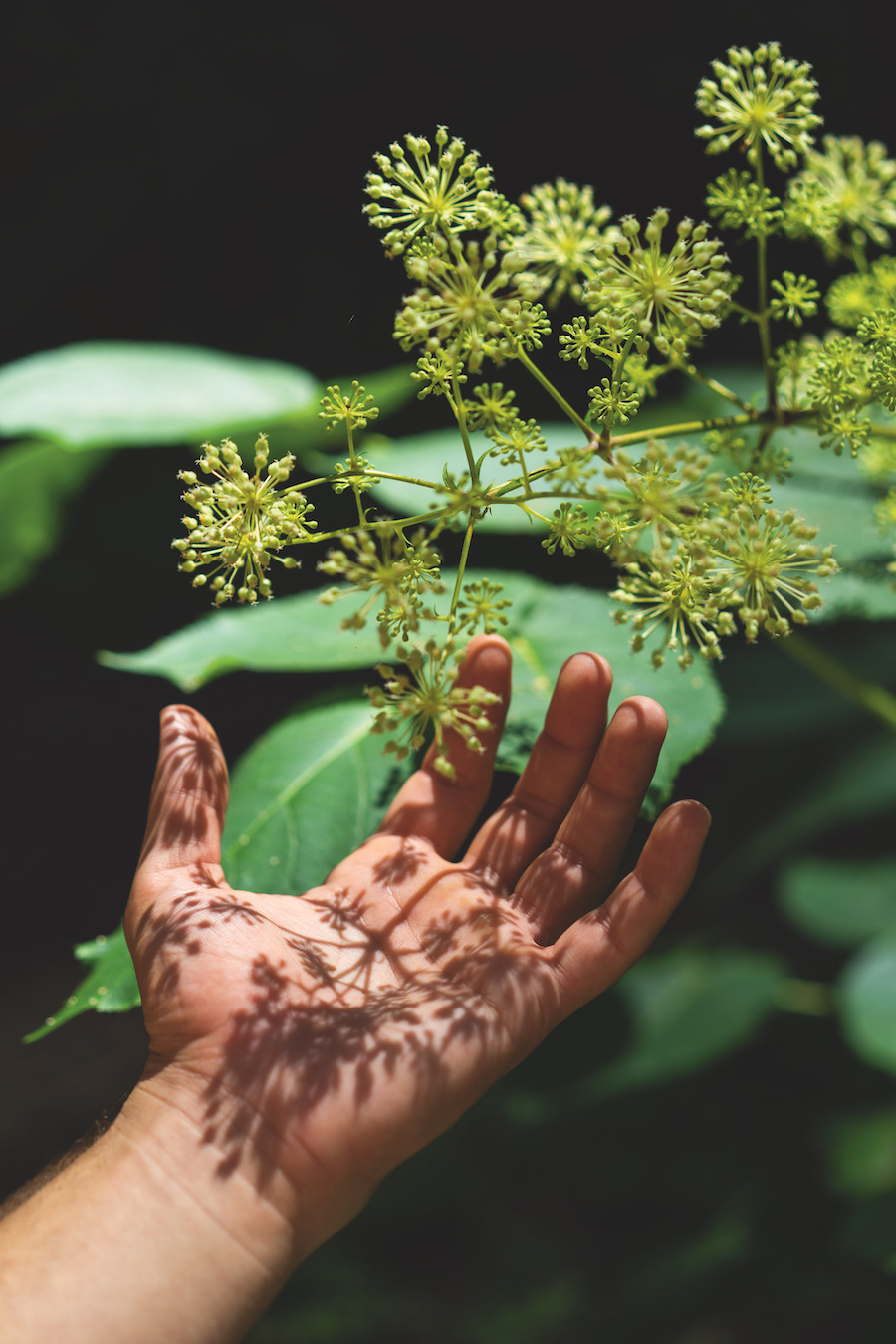
From the ways that my breath is woven into the world, I move to pondering the rest of my body. I am host to myriad life forms, and these life forms shape my health and life. I eat plants and animals; tiny animals decompose my body when I die, and plants use that decomposed matter as food. We are woven together in life and in death.
We are also woven into the world mentally. As open-loop neural systems, every mind learns from the minds around it. My mind is restructured by reading your book or hearing your speech. But I also learn from you when you hum the baby a lullaby, when you post an angry comment, when I walk by a garden that you have tended.
There is, of course, a downside to all this connectedness. It is impossible to distance ourselves from the physical and mental world in which we are entwined. When the trees burn on the mountainside above me, I feel the flames licking at my bark. When earthquakes strike, I am searching the rubble for my toddler. When drought reduces the creek to a trickle, I lie gasping in the mud. When bombs fall, I am praying that my teenagers come safely home.
Being intertwined — imbibing like roots — means that I will take in the innocent suffering of the world. Being intertwined means that there are times when the sorrow overtakes me. It means that I cannot — I will not — stand untouched as Creation groans and writhes like a woman in labour.
As the writer and activist Rebecca Solnit says, it is possible to be “hopeful and heartbroken at the same time.” Which brings me to beauty.
***
So I place them on what is beautiful in this world
Again, I look closely at the words. Now it’s no longer a story about the collective human experience. Francis says, “I place them.” He suggests that the individual can take specific action.
The contemplative teacher Cynthia Bourgeault tells a story about a friend of hers — a jazz musician and Buddhist — who made his living tutoring kids: four hours a day, six days a week. Bourgeault once asked him if he got bored. He said sometimes, but only when “I’m not paying enough attention.”
Attention is the ingredient that lights up the world.
To “place” something requires careful and intentional movement: attention. Placing my hands on the world implies that I enter into relationship with it. It’s more than just physical contact — it’s conscious awareness. It’s reverence.
I decide to take my attention out for a walk. I place my hands on cedar trees and stay until I can feel the warmth and softness of their bark. I rub the scars made by bear claws on a mountain ash trunk. I feel the coolness and grit of the garden soil, smell the pitch on a pine. I rest my eyes on the lavender and gold of Michaelmas daisies. I squeeze a rosehip, rub its waxiness on my palm, taste its tang. I tunnel my fingers into the soft fur of the dog.
I place my hands on beauty. When I pay attention to beauty, it eases the band of anxiety and grief around my chest.
But then I start thinking. What about things that I don’t instinctively find beautiful? Francis of Assisi famously experienced conversion when he kissed a leper, writing, “What had previously nauseated me became the source of spiritual and physical consolation for me.” When Francis says, “I place them on what is beautiful in this world,” I strongly doubt that he means for us to touch only pretty things. I suspect he’s suggesting that we learn to see beauty in all things.
More on Broadview:
- As Easter approaches, I’m learning to embrace joy in ordinary life
- Canadian mining companies are destroying communities in the Philippines but this United Church mission team is determined to help
- How Lytton, B.C., is preserving its history after a devastating wildfire
I have learned that when I lay my hands on things that aren’t inherently attractive, my attention can make them so. As I give my conscious, loving attention to the lengthy board meeting, to the dirty dishes, to the irritating colleague, these become imbued with beauty. “I clean this teapot,” said the late Buddhist teacher Thich Nhat Hanh, “with the kind of attention I would have were I giving the baby Buddha or Jesus a bath.” When I have taken the time to admire the iridescence and complexity of a stinkbug, how could I possibly harm it? My attention transforms not only my seeing but my relationships in the world.
At this point, I stop. I have been drinking in beauty and connection, through my mind, my hands, my eyes and ears, through taste and smell. Now it is time to pay attention to the palpable gratefulness within. I slow down and let gratitude for this world, as it is this very minute, rise in me. I feel the internal spaciousness that accompanies gratitude. I rest in this.
Gratitude is not only a lovely practice. It is a necessary accompaniment to what comes next.
Because another question rises when we speak about beauty: what of human evil, senseless destruction? What of the atrocities in Palestine and Israel, the murdered Amazonian land protectors, birds choked on crude oil spills, toxic residue spilling into clean waters? To simply step back and name these beautiful — arguing “God must have a reason,” or “In a million years it won’t matter” — can be the worst kind of spiritual bypassing. The wilful refusal to acknowledge pain and suffering is a betrayal of the spiritual path. It is sin.
I don’t believe that we are invited to see these horrors as beautiful. I believe, rather, that we are to see through every suffering being to the Christ within: to beauty. To see that everyone tending to suffering beings has a core of Christ, of beauty. Even to recognize that in the depths of every seemingly soulless perpetrator of destruction is the suffering Christ, longing to come awake.
Now comes the painful grieving part. Because of course, to see through the devastated world to the Christ within requires that we look closely at that devastated world first. It requires that we pay attention to what is happening. The problem here is that when I truly pay attention to what’s happening in the world, I feel like I might just drown in sorrow. My heart is open, awake and raw. What do I do with these feelings?
Well, I don’t run from them. After all, Jesus wept. So I turn back to the words.
***
And I fold them in prayer
Francis tells us that we should take our beautifully sensitive hands and bring them together in prayer. He invites us into a conscious gesture of devotion and humility. Folding my hands in prayer quiets my body and mind; it also reminds me that I am not in charge. I am asking for help from the One who loves me.
I notice, as I follow Francis’s directions and fold my hands, that I have ceased taking things in. I have allowed my mind to come to a standstill. I have let go. And when I let go, when I surrender, when the commentary of my busy brain stops, then I really feel all this pain. Then my heart really breaks.
In my experience, the prayer that accompanies the breaking of my heart does not hew to recognized theological formulas. It is inept, inadequate and bumbling. It is almost always inarticulate. I recognize that I can’t do a damned thing about most of what breaks my heart, and what I can do feels so inadequate that I am tempted to quit before I start. I cry for justice, for mercy, for forgiveness, with not a clue about what these might be in the given situations or how they might come to pass. Heartbroken prayer pushes me up against my poverty and powerlessness. I weep. I weep and at some point, I shut up.
“I cover my mouth with my hand,” said Job. Like Job, I reach the place where I have nothing to say. No useful thoughts to think. No more tears to cry, no inkling what to do next. I surrender.
That’s what makes this prayer so powerful.
Because like Job, when I stop talking, when I let go, then there’s room for God.
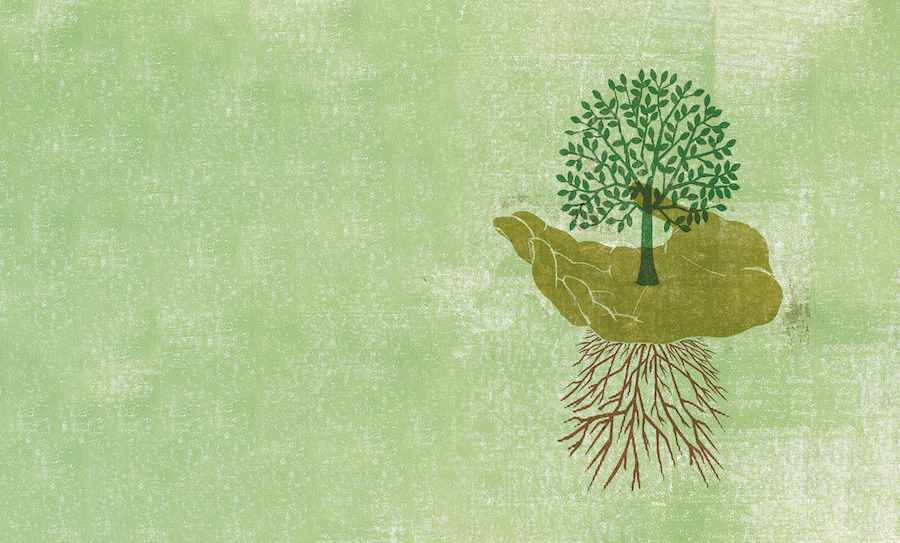
The first thing that arises as I come to rest in Holy Silence is a reminder that nothing can separate me from the love of God in Christ Jesus. Neither floods nor fires nor political upheaval nor catastrophic climate change nor even death can take away the knowledge and the experience that we all — every being, every molecule — partake in the life of God. This is the message: at the deepest, truest level, all is beloved. I am beloved.
The second thing that comes is the sense that I am being loosened from my mental bondage. I begin to experience freedom from my limited ideas and opinions, my need to have things fixed in a way that I understand. I start to give up attempting to control situations that are beyond my control. I cease trying to figure out if or how we will ever get out of this mess, and — this is the important part! — I begin to wonder what faithful response is required of me.
The alternative to all my distraction, confusion and despair is resting in the stillness of Love. In that quiet centre, fear loses its grip on me. It’s true that I may still be deeply sad; I am also free to act. This is an interesting way to feel in the midst of heartbreak.
When I let go more deeply into Holy Silence, I recognize that while the world is not mine to fix — after all, I’m not God — some parts of the world are mine. There are specific places where I am invited to join my human energy to the Holy Intention. “By inner persuasions, [God] draws us to a few very definite tasks, our tasks, God’s burdened heart particularizing [God’s] burdens in us,” wrote the Quaker mystic Thomas R. Kelly. It is this shifting of focus — away from my own sorrow, pain and fear, and toward an inner surrender to infinite, inexplicable Love — that allows me to become bold and free in my actions.
It’s not simply about moving my attention away from fear and onto God. It’s also about moving away from the endless list of what needs to be done and toward what the Buddhist environmentalist Joanna Macy describes as “the vision that calls us most strongly.” There is no need to do everything: this is a time to trust that others are stepping forward too. Our work will be interwoven and cumulative. We simply and humbly take on the tasks that have been laid upon our own heart.
When we navigate by heart — not emotion, but the wisdom deep inside — then success ceases to be the measure by which we evaluate our work. If we discern, and faithfully do, what is ours to do, then the important question isn’t “Can we win this battle to save the old-growth forest?” or “Can we stop this war?” or “Does my work actually make a difference?” The only question that matters is “Am I being faithful?”
With faithfulness as my standard, divine possibility blossoms in every seemingly dead corner of the world. When faithfulness is our standard, then our work — however seemingly hopeless — will change the world. Because there is something more at work, says Francis.
***
And they draw from the heavens light
I return to the prayer, turning my attention once more to the words. It’s worth noticing that Francis has again shifted the subject. He began by referencing our collective self, the reality of being a human — “Our hands.” He then turned to individual actions that we use to pay attention and to surrender — “I place [my hands] … fold them in prayer.” Now, he directs us to notice that our hands, folded in prayer, cause something to happen — “They draw from the heavens light.”
Hands folded in prayer are sacramental. They act as an outward physical expression of an inner surrendered self. It is the humility and devotion expressed by folded hands that draws light from the heavens: not our minds, not our hard work, not our personalities, not our gifts, but the act of turning ourselves and all our concerns over to the Holy. Our surrendered self makes room for something more than us. This is where the Spirit shows up.
Here’s the thing about the Spirit: She blows where She will. Once we invite the Spirit in, we don’t know what is going to come next. We are accountable for responding faithfully to what has been laid on our heart. She’s in charge of adding the oomph to our actions, putting backbone into our fearful selves, finding us allies: for whatever is needed, for whatever comes next.
In case you’re wondering, this is where joy shows up. Joy is what happens when we quit pretending that we deserve to escape this communal suffering. Joy is what happens when, in order to help others, we commit to find our footing in the flood. Joy is the unintended but inevitable result of heartfelt action: not the reason why we do this work nor the reward for it, but the side effect of our committed life. Joy rises from the crucible of conscious action like bubbles off champagne, spray from a waterfall, the tang of sourdough bread. As the Black American poet and author Ross Gay writes, joy is not “a refuge or relief from heartbreak” but rather “what effloresces from us as we help each other carry our heartbreaks.”
Our hands imbibe like roots, says Francis. We take in the glory of incarnate life; we touch it and love it and are grateful. We weep over the broken world, and we hold it in the light of God’s love. Then we act, in faith. Not faith that the world isn’t really broken, but faith that we are capable of responding because the Holy One really is our root and our ground, holding all things in love, holding all things in relationship.
***
Therese DesCamp is a writer, spiritual director and minister in New Denver, B.C. She was long-listed for the 2023 CBC Nonfiction Prize for an essay on joy, suffering and awe.
This story first appeared in Broadview’s April/May 2024 issue with the title “Rooted in Reverence.”

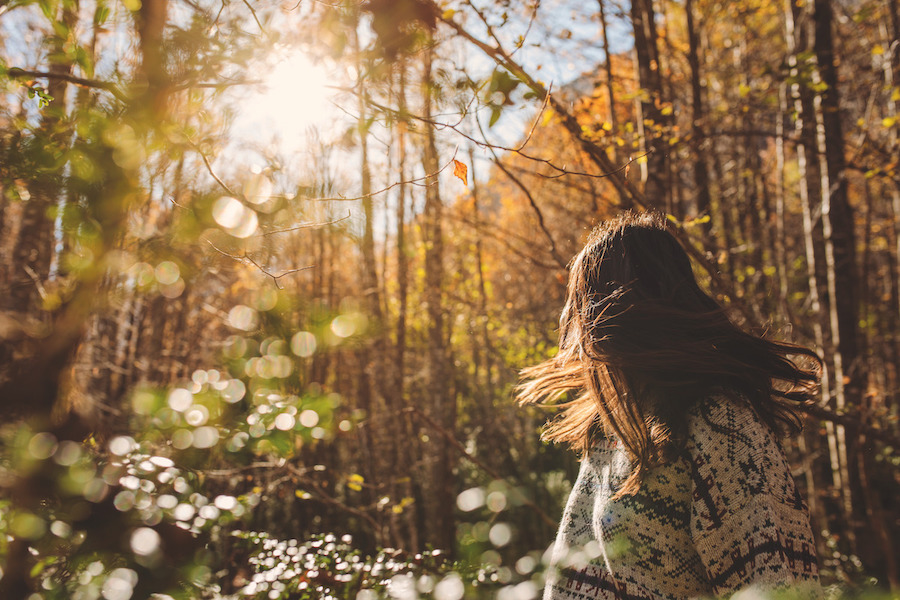


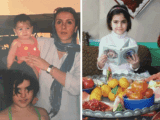
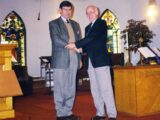








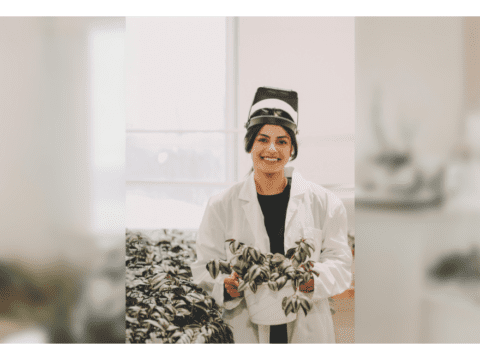

This moved me to the core. I will be reading it many times as there is in it the answer to many questions that have been in me for quite a long time. Thank you, Francis, thank you, Ladinsky, thank you Sheldrake, thank you Therese. And thank you, Broadview, for publishing this amazing, instructive, empowering insightful writing.